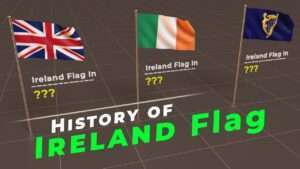By Delainey Muscato – St. Bonaventure University
St. Patrick’s Day is almost upon us. This year, March 17 falls on a Sunday. Many people spend the day decked in green and drinking Guinness but never consider why those are the traditions they follow. Let’s look a bit deeper into the history of St. Patrick’s Day and how it has been celebrated over the years.
In Ireland, people have been observing the Roman Catholic feast day of the actual St. Patrick since the ninth or 10th century on March 17. However, the first St. Patrick’s Day parade did not occur until 1601, not in Ireland but in America. Over the next few decades, as the Irish population in America grew, celebrations of the saint’s day expanded and became annual traditions.

While the day is meant as a celebration for the patron saint of Ireland, there was originally more celebration in American than in Ireland itself. Pubs in Ireland would be closed on the day until the 1970s. Since the 1990’s the Irish government has sponsored a St. Patrick’s Day Festival in Dublin that lasts several days. The festivities feature a parade, many performances, and fun activities. This festival helps promote tourism and boost the economy.
So how did St. Patrick’s Day, a day originally marked to honor the patron saint of Ireland, become such a secular holiday that now focuses on having fun and socializing more than reflecting on and being thankful for the teachings of St. Patrick? Irish emigrants that traveled to America are the main reason.
The year 1848 marks the beginning of the official New York City St. Patrick’s Day Parade. this parade is the world’s oldest and largest civilian parade in the United States. It was formed when several New York Irish Aid societies combined their individual parades. Today the parade averages 150,000 participants each year with another 3 million lining up along the 1.5-mile-long parade route to watch.
The iconic shamrock, whose image is synonymous with the day, is actually considered a sacred plant in Ireland. It symbolizes the arrival of spring and according to legends, St. Patrick used the shamrock as a visual representation of the Holy Trinity in his teachings.
The staple meal of St. Patrick’s Day, corned beef and cabbage, was actually an American invention. In Ireland, ham and cabbage were eaten. For immigrants, corned beef was a cheaper alternative. They would boil the beef twice on its own and a third time with cabbage to absorb some of the brine.
Another, and probably the most famous, tradition of St. Patrick’s Day is wearing green as much as you can possibly incorporate into your wardrobe. But what is the real reason behind this color choice? When England invaded Ireland and Henry VIII declared himself king of Ireland in 1541, Ireland was given a coat of arms with a blue background. As a sign of defiance by those who were against the English occupation, rebellious natives decided to choose green, the color of the shamrock, to symbolize their country.
According to History.com, an Englishman who traveled through Ireland in 1681 saw people wearing “crosses of green ribbon in their hats on Saint Patrick’s Day”. Green became the symbolic color of rebellion, national pride, perseverance and strength in Ireland and translated into the holiday the country is best known for.
What about leprechauns? What connection do they have to this day? In original Irish, leprechauns are called “lobaircin”, meaning “small-bodied fellow”. Celtic legend suggests that leprechauns are actually based on fairies from Celtic lore. In these folktales, leprechauns are grumpy and well known for their trickery. Irish legend also says that wearing green makes people invisible to the leprechauns and helps keep your gold coins safe.
There you go! You can now enjoy your St. Patrick’s Day with a little more knowledge of why we wear green, eat corned beef, and sport shamrocks all over.
